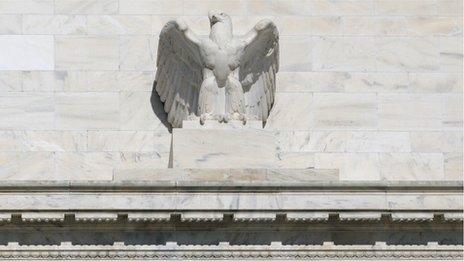Q&A: What is tapering?
- Published

The US Federal Reserve has expanded its balance sheet by trillions of dollars to fight the downturn
Since late 2012, the US central bank, the Federal Reserve (or simply the Fed), has been spending $85bn a month to boost the US economy.
That is the most recent phase of quantitative easing (QE), a policy that began as a response to the financial crisis that struck in 2007.
Under the plan, the Fed has been buying assets - a mixture of US government debt and mortgage bonds. This has the effect of driving down US interest rates, including the cost of mortgages, car loans and financing for business.
But on Wednesday, the Fed announced that it was scaling back - or tapering - that support to $75bn a month.
So what is tapering anyway?
Why now?
How much has the Fed committed to QE?
That is a lot of money. Did it work?
Were there any unintended consequences?
- Published29 August 2013